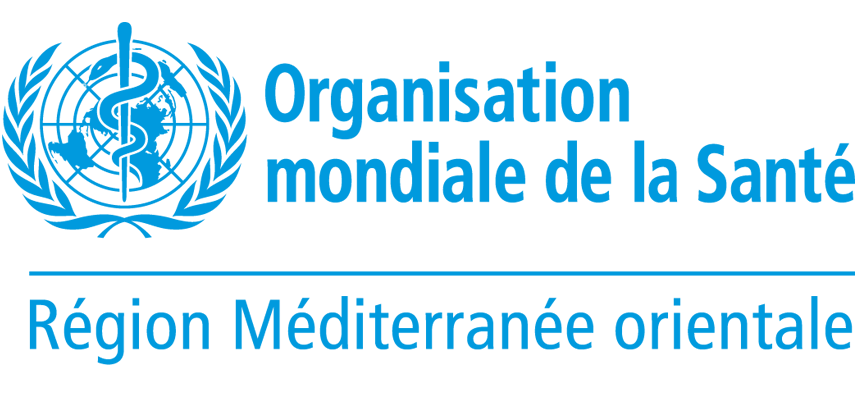Statement by WHO's Regional Director for the Eastern Mediterranean on the 10th year of the Syria crisis
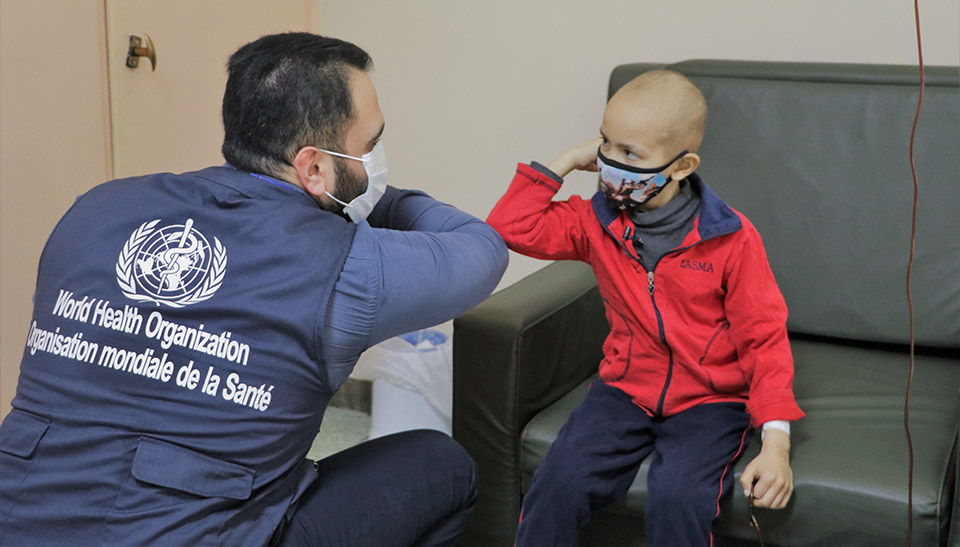
16 March 2021 – Exactly 10 years after the conflict in Syria began, new challenges have emerged, perpetuating the suffering of Syrian people already exhausted by the ongoing conflict, violence, political fragility, and the burden of unmet socioeconomic needs. COVID-19 and the regional economic crisis have brought further devastation to individuals and communities all over Syria. Given the fragility of the situation, the capacity of the health system is likely to fall short of a successful response to COVID-19 and global efforts to stop its transmission.
With over 90% of the population living below the poverty line, many people cannot afford basic social services, including health care. The conflict has had a dramatic impact on all Syrians, but especially on the most vulnerable groups, such as women and children, internally displaced people and persons with disabilities.
As the situation is turning into a protracted emergency, overall needs are increasing. Out of 20.5 million people in Syria, more than half of the population are in dire need of health services. At least 15% of the population requires mental health and psychosocial services and this has increased since COVID-19, and shortages of safe drinking-water, due in part to the deliberate targeting of water networks, have left up to 35% of the population relying on alternative and often unsafe water sources. In northwest Syria, the number of people without access to safe water is much greater.
Almost one third of all people – most of them women and children – are still internally displaced in camps or camp-like settlements across the northwest and northeast with limited access to food, shelter, safe drinking-water, health and sanitation services. Many Syrians have suffered disabilities because of the conflict, and almost half are likely to have lifelong impairments that will require specialist support. With acute shortages of orthopedic and reconstructive services to treat critically injured people, and lack of emergency surgery for trauma patients, opportunities are limited to address the needs of these vulnerable populations.
People are prematurely dying due to lack of access to life-saving procedures and lack of medicines for managing chronic diseases. Some of the greatest humanitarian needs inside Syria are a result of high prevalence of noncommunicable diseases and lack of specialized treatment facilities for cancer, chronic diseases, injuries, and disabilities among the Syrian population.
The state of health care infrastructure is a matter of major concern. Nearly a quarter of all hospitals and one third of all primary health care centres remain non-functional and unable to respond to the growing health needs. According to recent WHO data, only 1 out of 16 public hospitals is fully functioning in northeast Syria, while other hospitals are either partially functioning or not functioning at all.
Economic downturn and high rates of inflation exacerbated by the COVID-19 pandemic have a dramatic impact on livelihoods. They also have significant impact on humanitarian programmes, affecting the capacity of humanitarian actors to effectively implement their projects and programmes in support of vulnerable children, women and men. Sanctions imposed on the country continue to aggravate an already overstretched situation, affecting all people and all sectors, reducing the health sector's capacity to respond to growing needs and health threats.
In northeast Syria, with its population of around 2.6 mlllion people, the security situation remains volatile with pockets of violence contributing to overall instability and fragility. Internally displaced people in the area are some of the most vulnerable across the entire country, and most people living in camps are children under the age of 17 and women.
In northwest Syria, over two thirds of the Region’s 4.1 million population (76% of whom are women and children) are internally displaced in camps across Idleb and northern Aleppo. Ongoing conflict means that host communities and displaced populations may be forced out of their homes and be displaced for more than one time with no guarantee of safety.
WHO on the frontlines of the response
Despite all challenges, WHO responded to fast-changing concerns and demands with flexibility and agility. WHO works to reach all people across Syria through its main office in Damascus and sub-offices in Syria, complemented by cross-border operations from a northeast Syria and 5 subnational health sector groups. From Gaziantep, Turkey, WHO coordinates cross-border operations with more than 70 partners.
A network of more than 1700 health facilities across the country report to the WHO-supported disease surveillance system. This is critical to detect and respond to outbreaks quickly, especially in a country whose population is so vulnerable to infectious diseases.
Against the backdrop of a larger humanitarian emergency, WHO is working closely with other United Nations agencies and nongovernmental partners to implement a consolidated response to COVID-19. WHO is working with UNICEF and partners across all 14 governorates in Syria to bring vaccines to cover 20% of the high-risk population against COVID-19 through the COVAX Facility, including the northwest and northeast.
In 2020, together with donors, national, international, and local communities, WHO supported over 1 million medical procedures, more 8 million treatment courses, 700,000 outpatient consultations, including consultations/treatments related to mental health, psychosocial support, and trauma. In 2020, more than 2.6 million children were vaccinated against measles and polio.
WHO worked hand-in-hand with health care professionals to provide over 10 000 physical rehabilitation sessions; 1500 pregnant women received access to skilled birth attendant for normal and emergency delivery; 12 000 patients were referred for specialized treatment; and thousands of health professionals were trained, including on COVID-19 clinical management, infection prevention and control, and surveillance and response.
People in Syria are caught up in a crisis that needs a political solution, and while these solutions are sought on the political level, WHO remains committed to continue its support to Syrian people, by protecting public health and serving the vulnerable people . Under our Regional vision, we are working to ensure “Health for All, by All” – including for the people of Syria.
On this anniversary date, let us remember that we must live up to our responsibilities in supporting the Syrian people; we must let them know that there is hope. Let us all, partners, donors, supporters make sure that we are rallying millions of generous people to provide ongoing relief.
WHO and the Government of Japan strengthen health services in north-east Syria
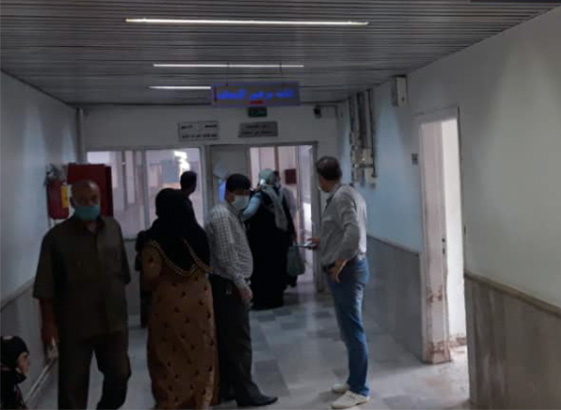 9 February, Damascus, Syria – WHO Syria and the Government of Japan sealed a strategic agreement to rehabilitate and renovate the Al-Qamishli National Hospital in Al-Hassakeh Governorate of Syria. By signing the agreement, the Government of Japan has demonstrated its continuous commitment to reviving the Syrian health system fatigued by the decade-long crisis.
9 February, Damascus, Syria – WHO Syria and the Government of Japan sealed a strategic agreement to rehabilitate and renovate the Al-Qamishli National Hospital in Al-Hassakeh Governorate of Syria. By signing the agreement, the Government of Japan has demonstrated its continuous commitment to reviving the Syrian health system fatigued by the decade-long crisis.
The generous US$ 6 million grant will assist in renewing the 40-year-old infrastructure of the hospital, while revamping secondary health care services at a hospital that serves as the main referral centre for many areas in north-east Syria. Once the hospital is renovated, health workers and doctors with different specialties will have an opportunity to regain their profession and help people in need of health services.
Al-Hassakeh governorate serves as the base for most of WHO’s humanitarian health operations in the north-east. Some of Syria’s major camps for internally displaced persons (IDP) are located in this governorate. The Al-Qamishli National Hospital, built in 1982, was once renovated in 2005. However, the hospital with just the 200-bed capacity and overburdened since the crisis in Syria started, requires major rehabilitation. Currently, it is the only functional hospital in the Region, yet it struggles with outdated infrastructure and equipment.
Though the hospital is in a pressing urgent need of overall maintenance as well as replacement of its outdated medical equipment, WHO, with support from the people of Japan, will prioritize the vital functions such as the burns unit, intensive care unit, emergency, dialysis, magnetic resonance imaging, and isolation sections.
Furthermore, modern medical equipment will be procured to meet the needs of all the departments in the hospital.
Japan’s support will cover the critical gaps to avoid further deterioration of health services, as well as strengthening the country’s capacity to respond to public health emergencies due to major outbreaks.
WHO’s response strategy revolves around expanding the availability of health care services, as well as delivering medicines and supplies to hospitals to help them manage the influx of patients. Once renovated, the hospital will serve the needs of 1.6 million people, including 600 000 IDPs in the 3 northeastern governorates of Al-Hasakeh, Ar-Raqqa and Deir-Ez-Zor.
“WHO continues to contribute to the regional vision of Health for All by All and to make sure that no one is left behind,” said Dr Akjemal Magtymova, WHO Representative in Syria. “We are very grateful for the generous contribution of the Government of Japan which will play a crucial role in addressing the shortage of life-saving health services that have been exacerbated by the COVID-19 pandemic and the Syrian war,” Dr Akjemal noted.
“Japan stays engaged in humanitarian assistance to support children, youth and women wherever they are in Syria to meet their urgent needs,” said Mr Akira Endo, Special Coordinator for Syria and Charge d'Affaires of the Embassy of Japan in Syria. “The humanitarian crisis in Syria has become more complicated, especially as a result of the impact of COVID-19, which has negatively affected the health and living conditions of thousands of households. We sincerely hope that our contribution will find its way to people in need of assistance and alleviate the suffering of as many Syrian people as possible.”
WHO addresses health inequities in Syria and ensures improved access to health care for all
27 January 2021 – The raging war in Syria has taken its toll on the country, its citizens and infrastructure. During the decade-long crisis a lot of health facilities endured destruction. According to the WHO Health Resources and Services Availability Monitoring System (HeRAMS) for September 2020, about 51% of Syria’s hospitals as well as 52% of public health centres were either completely out-of-service or partially functional. Consequently, vulnerable communities were deprived of their fundamental right to have access to quality health care.
As a lead agency advocating for health for all and by all, and given the increased needs to respond the COVID-19, the World Health Organization, with the continuous support of donors, has supported rehabilitating some of the most damaged health care centres across the country. By building back the health centres, WHO and its partners aim to bring quality and affordable services closer to the people, a step towards universal health coverage.
In 2020, with a generous contribution from the people of Japan, WHO completed the renovation of 2 public health centres in Kadi Askar and Masaken Hanano districts in Eastern Aleppo. The health centres provide primary health care services to thousands of residents in that area.
“Rehabilitation of a public health care centre is one of the key elements in providing essential services for returnees and vulnerable population. The enhanced access to health care spared them the hardship of reaching out for treatment elsewhere, alleviated additional financial burdens, and saved their dignity,” expressed Dr Fadi passionately, a young doctor who is eager to restart his practice at Masaken Hanano primary health care centre.
Moreover, as the destruction in Homs and its suburbs became overwhelming, generous support from the Government of the Russian Federation helped to rehabilitate public health centres in northern Homs. Four health centres have been renovated in Jaboureen, Tir-Maaleh, Kafr-Nan, and Taldu. The rehabilitation of the health centre has come as a major step towards reviving the availability of health services in this area providing primary health services, vaccination, reproductive health and nutrition surveillance. “This step improved the working conditions of medical staff and allowed them to serve people in community. Now rural residents do not need to travel long distances to urban centres to secure medical support,” stated Dr Msallam Atassi, Director of the Directorate of Health in Homs.
COVID-19 further exacerbated the disparities that persist within different governorates and widened the gaps even further.
“The destruction inflicted on the public health system in Syria is unprecedented. WHO will continue expanding partnerships to avail health services to people, closer to their homes; it is their natural right,” stated Dr Akjemal Magtymova, WHO Representative in Syria. “WHO commits to advancing health coverage for all, especially the most vulnerable, whether living in disadvantaged rural or urban areas,” said Dr Akjemal.
In 2021, WHO will continue helping to restore the health services for thousands of Syrians and building back their future.
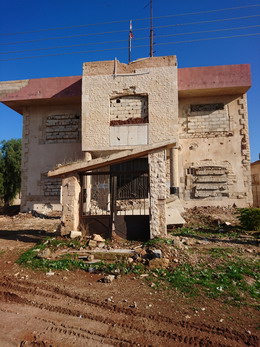 |
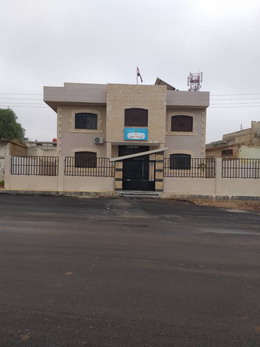 |
||
| Photos showing the primary health care centre in Tir-Maaleh in Homs, before and after the WHO-supported rehabilitation. Photos: WHO/Syria | |||
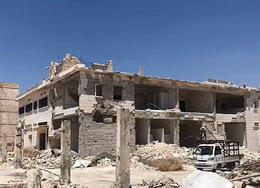 |
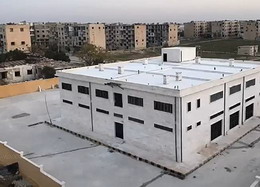 |
||
| Photos showing the primary health care centre in Masaken Hanano in Eastern Aleppo before and after the WHO-supported rehabilitation. | |||
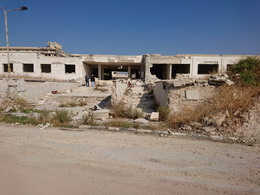 |
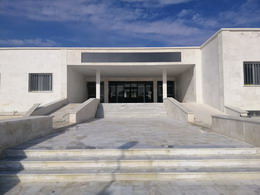 |
||
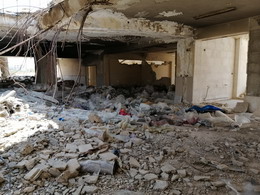 |
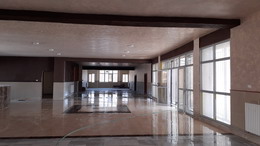 |
||
| Photos showing the primary health care centre in Kadi Askar in Eastern Aleppo before and after the WHO-supported rehabilitation. | |||
WHO addresses core capacities to ensure a better COVID-19 response
22 December 2020, Damascus, Syria – Dr Akjemal Magtymova, WHO Representative in Syria, along with Dr Ahmad Khleifawi, Syrian Deputy Minister of Health, chaired a meeting for national and international health sector partners to review the findings of the recent Intra-Action Review (IAR) meeting, improve the current strategies and strengthen the collective response to COVID-19.
Earlier in December 2020, WHO and the Ministry of Health organized a multisectoral IAR meeting to identify best practices, gaps and challenges in addressing the COVID-19 emergency in Syria. The 3-day meeting provided a unique platform to discuss major COVID-19 response pillars and established a base for strengthening the health security.
The response in conflict-affected Syria with disrupted health systems posed special challenges to the COVID-19 response. Highlighting the negative impact of COVID-19 on the lives and livelihoods of individuals, as well as the economy, Dr Akjemal stated in her opening remarks that “focusing on strengthening testing and treatment capacities constitutes response priorities in Syria.” She added that existing strategies should be constantly updated to adapt to the changing epidemiological situation. While acknowledging the tremendous efforts the Syrian Ministry of Health has made amid the unprecedented COVID-19 emergency and substantive contributions of partners, Dr Akjemal expressed her appreciation and commended “the selfless work of the dedicated individuals and teams who have worked so diligently to strengthen the health system for COVID-19 response.”
